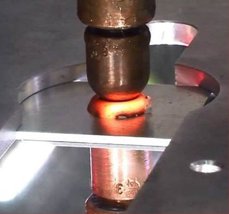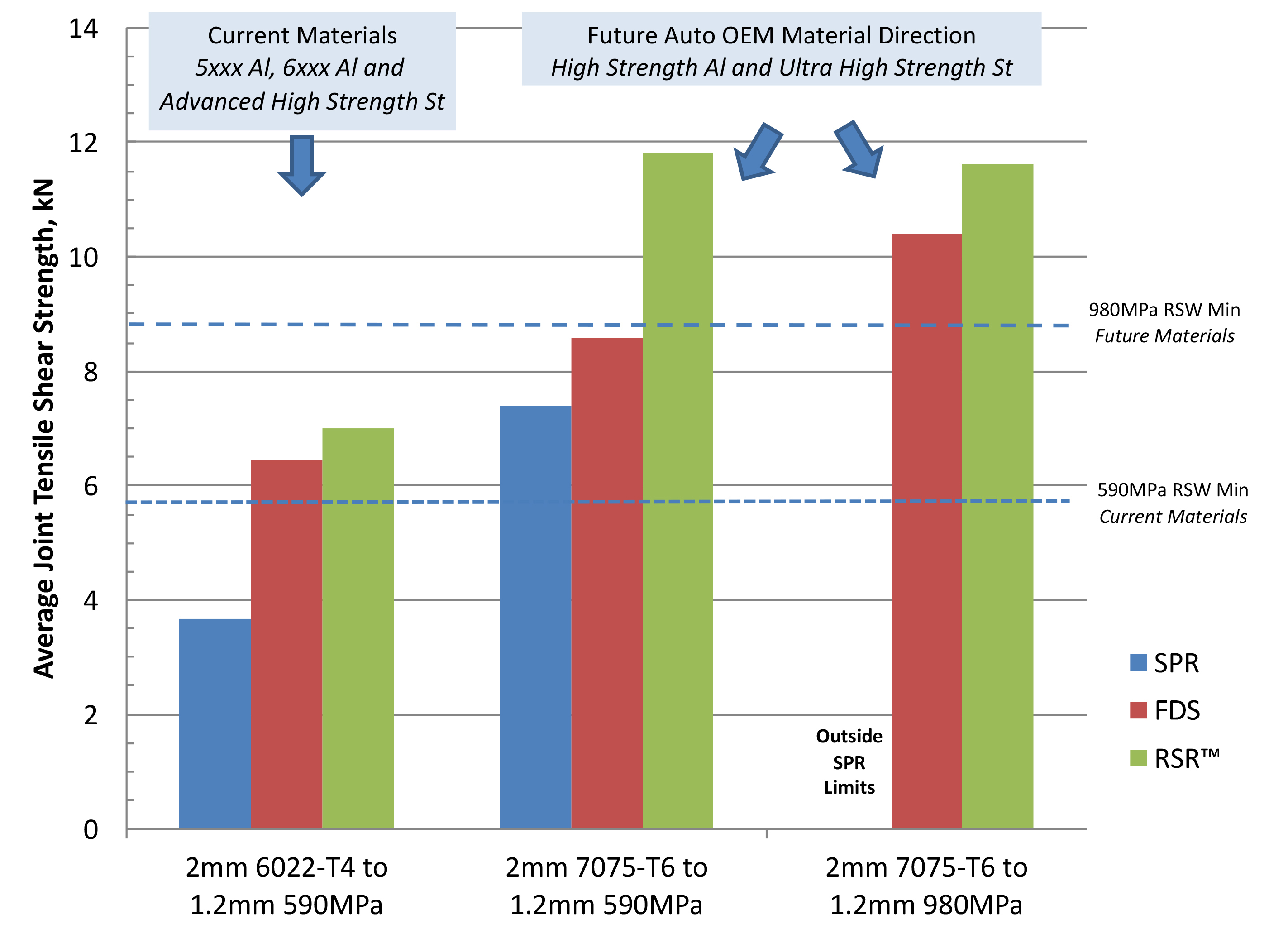
Responding to the growing industry trend towards multi-material part design, Alcoa has developed an advanced new joining technology. Resistance spot riveting (RSR™) was developed join dissimilar materials (aluminum, high strength steels, magnesium, and composites) using the same equipment implemented for conventional spot welds, providing automakers the flexibility to switch between RSR and conventional welds, depending on the material. It is designed to be used in nearly any application, including frames, floors, closeout panels, pillars, roofs, seats and intrusion beams, making RSR an effective alternative to conventional self-piercing rivets (SPR) and flow drill screws (FDS).
“Our RSR technology is going to be a powerful tool in the array of joining options for the automotive industry,” said Ray Kilmer, Alcoa’s chief technology officer and executive vice president. “As automakers continue to design vehicles using multi- material combinations, RSR technology is the ideal joining solution. It can easily accommodate stack up changes on the assembly line and it leverages existing welding robots outfitted with our automatic feeding systems.”
The RSR Technology
RSR technology has been in development for several years as a pilot program at the Alcoa Technical Center near Pittsburgh, Pennsylvania, where scientists and engineers have been collaborating with the Alcoa Fastening Systems & Rings manufacturing facility in Waco, Texas. The team has also been working on developing the rivet feed system in its Kingston, NY facility.
Combining resistance welding with rivets, RSR technology is said to allow for the flexible joining of various combinations of automotive material and results in joints that are 10-20% stronger than joints utilizing competing technologies. The company claims the technology can reliably join UHSS to aluminum, steel to Mg, and steel to composites, as well as 7xxx alloys to lower-strength 6xxx and 5xxx alloys. The RSR rivets also offers no back protrusion, for a smoother surface, and provide a high level of tensile strength, ensuring a secure joint (joint strength depends on gauge and material combinations). The technology will enable automotive OEMs to reduce vehicle curb weight by 2.5–5%, with a resulting 1.5–3% improvement in fuel efficiency, according to Alcoa.

Notably, Alcoa has designed the RSR technology to be used with conventional existing resistance spot welding (RSW) equipment and robotic automation with minimal modifications to existing production lines. The modification includes installing an RSR feeding system that works with all grades of fasteners without requiring hardware to be changed. The minimal modification helps OEMS to save on capital expanse, minimize production interruption from the installation of a new process, and achieve greater flexibility to shift between material combinations and fastener types, enabling them to deploy a variety of materials in their vehicles.
Moving to Prototype Scale
In addition to partnering with several customers on the RSR technology, Alcoa recently received a grant from the Department of Energy to work with Honda and the Ohio State University to demonstrate the use of RSR fasteners on a prototype scale. “We are working with Alcoa on advanced alloys and the RSR joining technology in conjunction with the Department of Energy because we are optimistic about the new value these advanced technologies will enable us to deliver to our customers in terms of performance and fuel efficiency,” said Eric Boettcher, technical leader, Advanced Body Design of Honda.
The objective of the program, entitled “Corrosion Protection and Dissimilar Material Joining for Next Generation Lightweight Vehicles” is to demonstrate the use of RSR in joining aluminum to dissimilar materials, such as steel and composites in lightweight automotive structures. The program will focus on the impact of manufacturing variations such as joint gaps and part angularity on performance as well as the delivery of a robotically assembled demonstration article. Ultimately, the goal is to achieve an additional 10-20% weight reduction over high strength steels.
Alcoa expects the first commercial application of the RSR technology by 2018.
